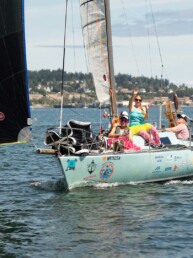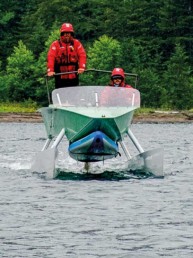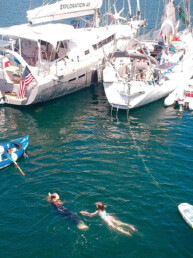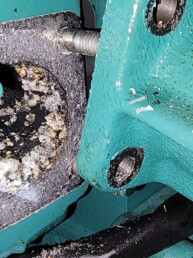From Washington, Oregon, British Columbia and Alaska, all the way south to Mexico and Central America, one of the things I’ve always enjoyed about writing this blog (going on 7 years!) is that I get to share our family’s sailing and traveling adventures with friends and family, complete strangers and casual acquaintances alike. Our cross-section of readers includes everyone from experienced to novice sailors to those who have never stepped foot on a sailboat.
In an effort to better explain the daily ins-and-outs of what it’s like to cruise on a 39-foot sailboat as a family, Jill and I have decided to put together a series of posts focusing on different aspects of life aboard. We hope this provides insight for our readers who are sailors, and for those who aren’t and might have lots of questions.
First up, passagemaking…
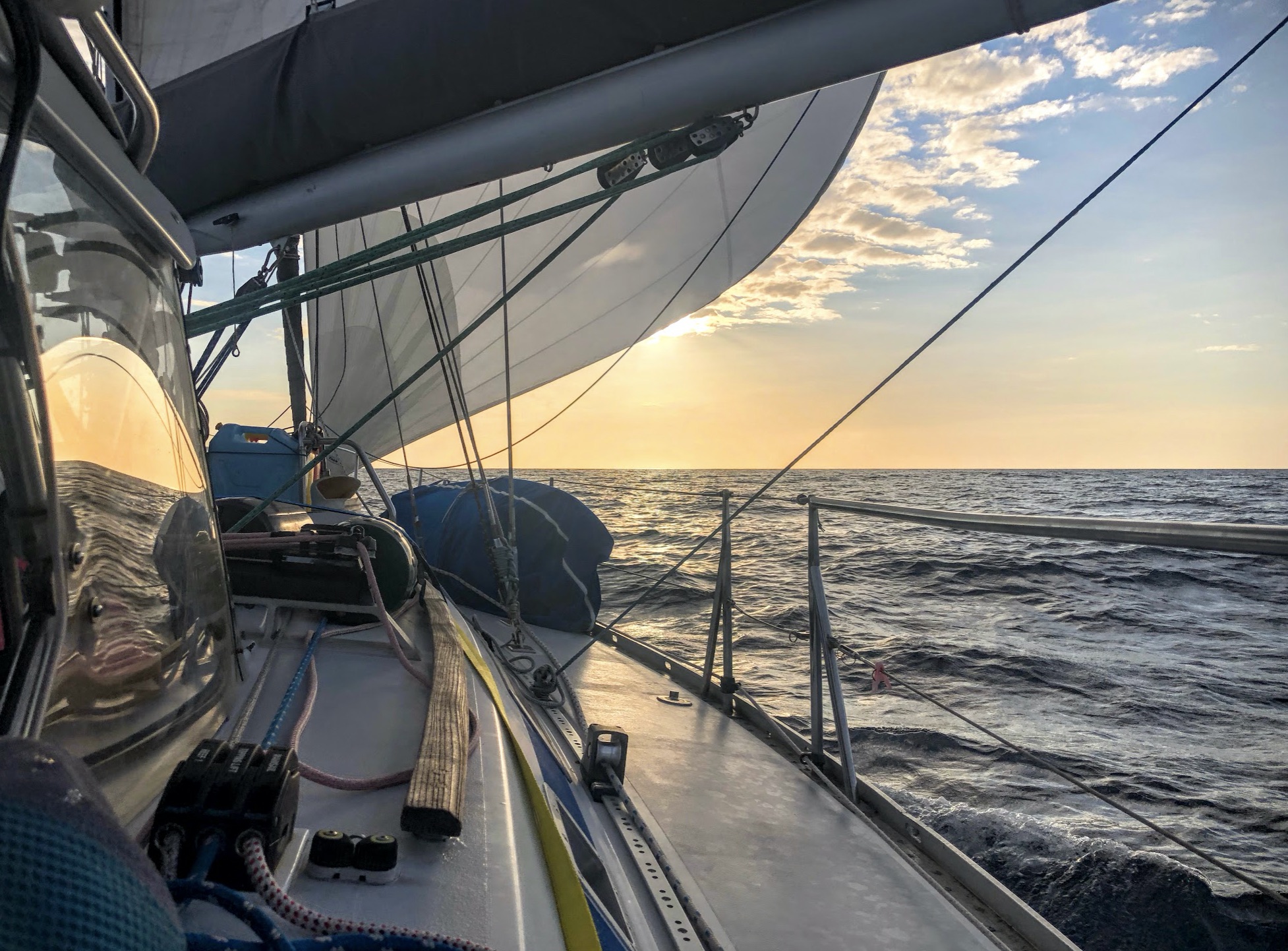
Since we just completed a 500-mile hop south from Mexico to Costa Rica, an appropriate place to start is with passagemaking. What is it like to sail for several days at a time to reach a new destination? Do you stop at night? Is it boring? What about storms?
These are all questions that we get about passagemaking, but first, some context is needed. It’s a common misconception that when cruising on a sailboat you make many long passages. In reality, the majority of cruisers and cruising families aren’t constantly sailing across vast stretches of open ocean. Mostly, they’re making hops up and down coastlines from anchorage to anchorage or port to port, then exploring one area for a length of time. Depending on where we’re cruising, these hops vary in overall length and distance offshore. The longest passage we’ve made as a family was 1,300 miles from Craig, Alaska to San Francisco, which took us nine nights and just about ten full days and had us a maximum of 200 miles offshore. (Read that story here.) Other than that, we’ve made quite a few shorter hops in the 200 to 500 mile range that last two to four days. So, what’s it like out there?

All nighters?
The question we get the most from non-sailors about passages is, “Do you stop at night?” And the quick answer is, “No, we keep going.” By far one of our favorite parts of passagemaking is sailing at night, and Jill and I trade off watches in two-and-a-half or three hour shifts depending on the passage and weather. At night we always wear automatic inflatable life vests and clip into attachment points in the cockpit or onto a line that runs along the deck from bow to stern (backline). The boys are not allowed out of the cockpit at night and we require them to wear life vests in the cockpit at night and when they venture out on deck during the day. Whoever isn’t on watch is sleeping, or trying to, and the boys sleep soundly through the night. Then, oftentimes, one or both of the kids will want to be on deck for the sunrise watch.

While on watch, Jill and I love reveling in amazing star shows and watching glowing phosphorescence glide by in Yahtzee’s wake, but we also pass the time by reading and listening to music. Besides trimming sails and keeping the boat moving in the right direction, the key duty of the on-watch crew is keeping a lookout for lights nearby or on the horizon. A night watch can quickly go from serene to intense when the wind and seas kick up unexpectedly or when spotting and tracking fishing vessels of various sizes or commercial shipping traffic. Along with those obstacles, we might also encounter other sailboats and if we are near shore, lighted buoys and lights on land need to be properly identified. Yahtzeeis equipped with AIS (Automatic Identification System) and radar, so we are able to track, avoid and be in contact with some of the vessels that we may encounter, but not all of them. Along the coasts of Mexico and Central America, we frequently come across small open fishing boats that have no electronics except for a single light. These are the most concerning because they can be hard to spot and track, and their course isn’t as consistent as commercial vessels.
What do you do all day? Does it get boring?
Daytime aboard is definitely not boring. If anything, it’s quite relaxing. During the day, we don’t have a specific watch schedule and instead opt for a free flowing process where one person, and usually more, is always on deck. Sailing-wise, if the wind is up it’s usually coming from a predictable direction so we set Yahtzee’s sails, trim accordingly and let the autopilot and/or self-steering Hydrovane do the driving for us.
While sailing (or motoring when there’s no wind), typical activities include reading, napping, listening to or playing music, watching dolphins play on the bow, and taking in beautiful sunrises and sunsets. We don’t have a TV aboard, but we do have a small DVD player that the off-watch crew can watch movies on and the boys get a set amount of time on their iPads each day.

Over the years and many miles, Jill has become incredibly proficient at getting the boat provisioned and we are never lacking in food for meals and snacks. Mealtimes are regular, unless the seas are bumpy and then we tend to have smaller servings and eat more snacks. We’ve dialed in several meals that we like for passages including tacos, breakfast burritos, chicken pesto pasta, chicken sandwiches, and baked ziti. Along with meals and snacks, we have “candy parties” to lighten the mood and keep morale high, and share drinks like Gatorade and soda. We also make sure to consume LOTS of water to keep us hydrated, especially in the tropics, and don’t drink alcohol on passage — that’s what celebrating landfall at anchor or ashore is for!
How do you choose your route? And what about the weather?
When Jill and I decide on a passage plan, we take a big look at the overall route from point A to B and then chop it up into smaller sections based on the weather or any navigational hazards. In the most recent case, from Mexico to Costa Rica, we could have sailed a straight shot from A to B. But, given the forecasted wind directions along the route, especially in Nicaragua, we opted to stay closer to the coast in order to catch thermally shifting breezes during the day and night, and to use predicted strong winds to our advantage. While Yahtzee sails well upwind and down, we always try to use favorable wind forecasts to sail across the wind or downwind, which is most comfortable.

People often wonder if we encounter storms at sea and I can happily say we rarely have. Technology allows for fairly accurate weather modeling and we pay close attention to trends and times of year, where to be and where not to be. For instance, when deciding to leave Alaska for San Francisco, we started looking for a weather window before the fall storm season started in the North Pacific Ocean. That window ended up being mid to late August and we had a ripping sail south with only 24 hours of gnarly weather to contend with. (Read more about that experience here.)
Conversely, now that we’re in the tropics and mid-latitudes, the weather is mostly benign and predictable. The wind rarely tops out over 25 knots and we have a good idea of when and where it’s going to be the strongest. In the tropics, the big thing we have to plan for is hurricane season, which runs from June through November and is most active in September and October. For the past two hurricane seasons, we’ve opted to leave Yahtzee in either a boatyard or a marina to go back to the U.S. to work and visit family — hence the break in our cruising adventures. In the month or so before and after hurricane season, we expect to deal with a few squalls here and there that bring localized heavy rain and strong winds but, as Captain Ron says, “They come on you fast and they leave you fast!”
Do you have cell/data service?
We get the cell service question a lot because, in this day and age, most people are connected all the time. Happily, the answer is “No”, we’re typically offshore far enough that we lose service, but there are times when traveling coastwise where we can pickup a signal. In reality, we actually look forward to not having service while on passage, because disconnected is part of what makes the experience so memorable.
Though the majority of our passages have us out of cell range, we keep in touch with family and friends, and get weather updates through a Garmin inReach satellite communicator. The little handheld device actually does a lot, but the text feature and associated app on our phone lets us send and receive updates to and from our family.
~~~~~~~~
Hopefully answering some of these questions has provided a window into what part of our life aboard is like. Look for our next installment soon.
Andy Cross
Andy Cross is the editor of 48° North. After years cruising the Pacific Northwest and Alaska with his family aboard their Grand Soleil 39, Yahtzee, they sailed south and are currently in the Caribbean Sea. You can follow their adventures at SailingYahtzee.com.

